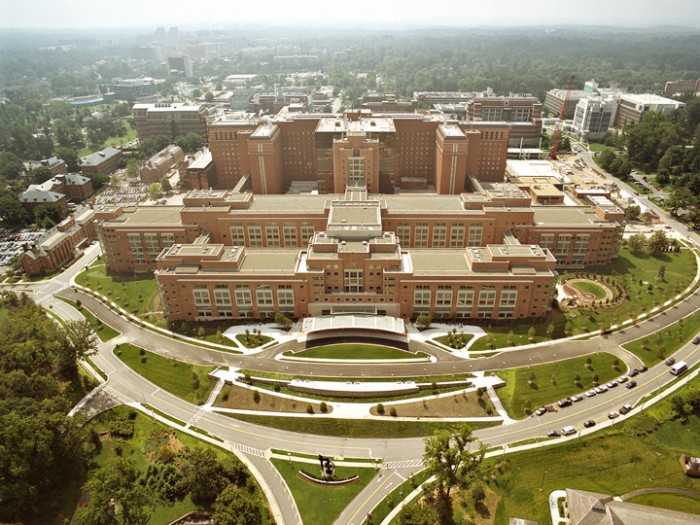What’s Trump’s Plan for U.S. Biomedical Research?
Among the many uncertainties related to the election of Donald Trump is the fate of the National Institutes of Health, the largest public funder of biomedical research in the world. In fiscal year 2016 it had a budget of $32 billion.
Trump has promised voters he will cut federal spending, and last year he expressed a negative opinion about the NIH to conservative radio host Michael Savage, saying, “I hear so much about the NIH, and it’s terrible.” But in response to a question about research from ScienceDebate.org, Trump said that scientific advances “require long-term investment.”
Former House Speaker Newt Gingrich, who is rumored to be a top pick for a position in Trump’s administration, could influence the president-elect’s views on the NIH. Gingrich has been a longtime advocate of the NIH and last year appealed to Congress to double the agency’s budget.

In a statement provided to MIT Technology Review, NIH said it “has a long history of bipartisan support and stands ready to work with the new administration to improve people's health and reduce the burden of disease through biomedical research.”
Others in the biomedical research community are similarly urging support for medical research. “We look at the new administration as needing to understand the real benefits that fundamental scientific research brings to everyone,” says Hudson Freeze, president of the Federation of American Societies for Experimental Biology (FASEB), a major industry group that advocates for biomedical research.
Freeze says it is not necessarily a bad sign that Trump hasn’t yet outlined a plan for biomedical research. “That could mean there are openings” to talk about policy, says Freeze.
Funding for NIH has remained flat for much of the last decade, resulting in a 22 percent loss in purchasing power, according to FASEB. In 2013, automatic spending cuts known as sequestration diminished NIH’s budget by 5 percent. That year, NIH funded about 700 fewer grants than in fiscal 2012. But the agency got a boost for fiscal year 2016 when Congress approved President Obama’s request for a $1.1 billion funding hike, the agency’s single biggest funding increase in more than a decade.
In June, a Senate subcommittee approved an increase of $2 billion for NIH’s fiscal 2017 budget. But new funds were shot down by Congress in favor of a short-term extension of current 2016 funding levels.
The future also remains uncertain for funding for specific medical research programs spearheaded by President Obama’s administration, like the BRAIN Initiative, Precision Medicine Initiative, and Cancer Moonshot. The BRAIN Initiative was launched in 2013 with an initial investment of $110 million from the NIH, the Defense Advanced Research Projects Agency, and the National Science Foundation.
In January 2015, Obama announced a $215 million investment in fiscal 2016 for the Precision Medicine Initiative. Those funds also come from a handful of agencies, including the NIH. The Obama administration also wants Congress to appropriate $1 billion for the Cancer Moonshot initiative, outlined by the president in his State of the Union Address in January, but no funding has been allocated yet.
Keep Reading
Most Popular
Large language models can do jaw-dropping things. But nobody knows exactly why.
And that's a problem. Figuring it out is one of the biggest scientific puzzles of our time and a crucial step towards controlling more powerful future models.
How scientists traced a mysterious covid case back to six toilets
When wastewater surveillance turns into a hunt for a single infected individual, the ethics get tricky.
The problem with plug-in hybrids? Their drivers.
Plug-in hybrids are often sold as a transition to EVs, but new data from Europe shows we’re still underestimating the emissions they produce.
Google DeepMind’s new generative model makes Super Mario–like games from scratch
Genie learns how to control games by watching hours and hours of video. It could help train next-gen robots too.
Stay connected
Get the latest updates from
MIT Technology Review
Discover special offers, top stories, upcoming events, and more.